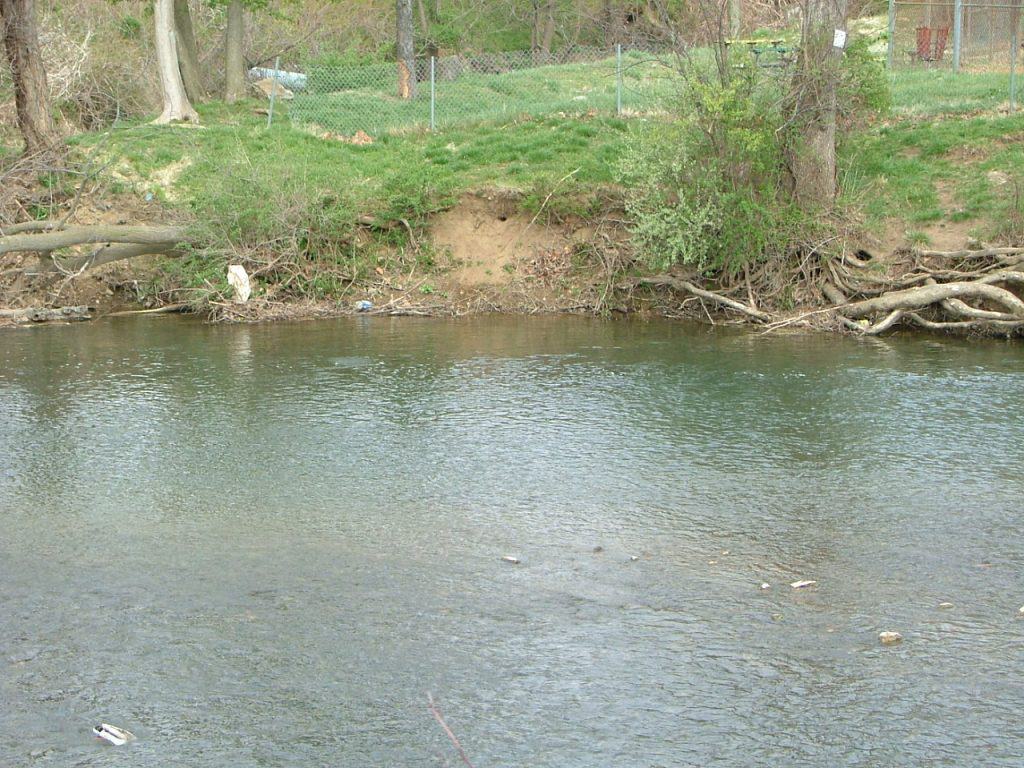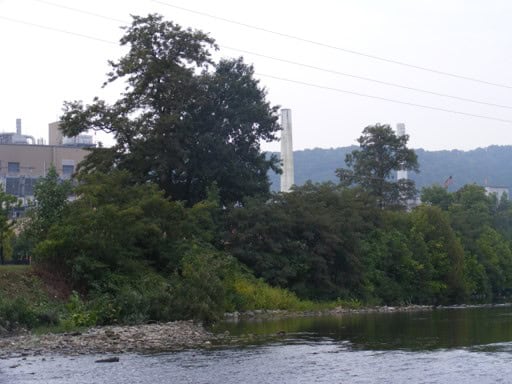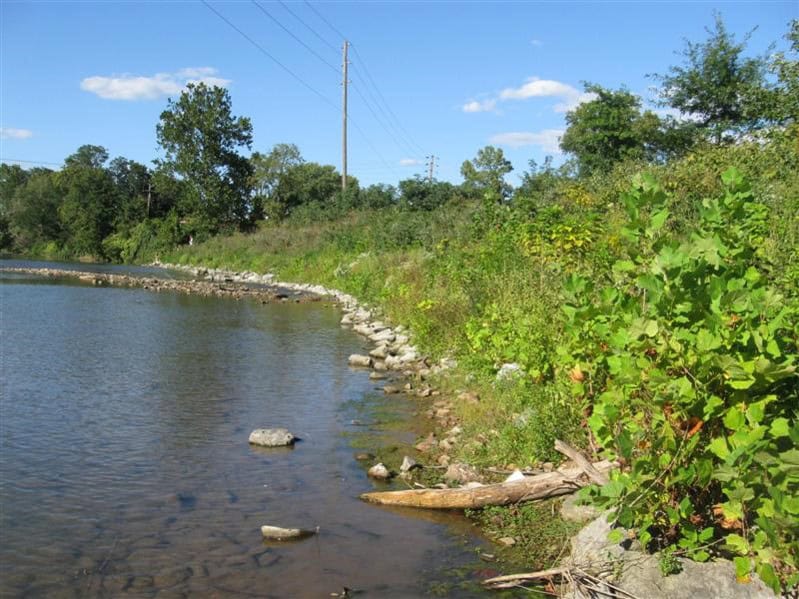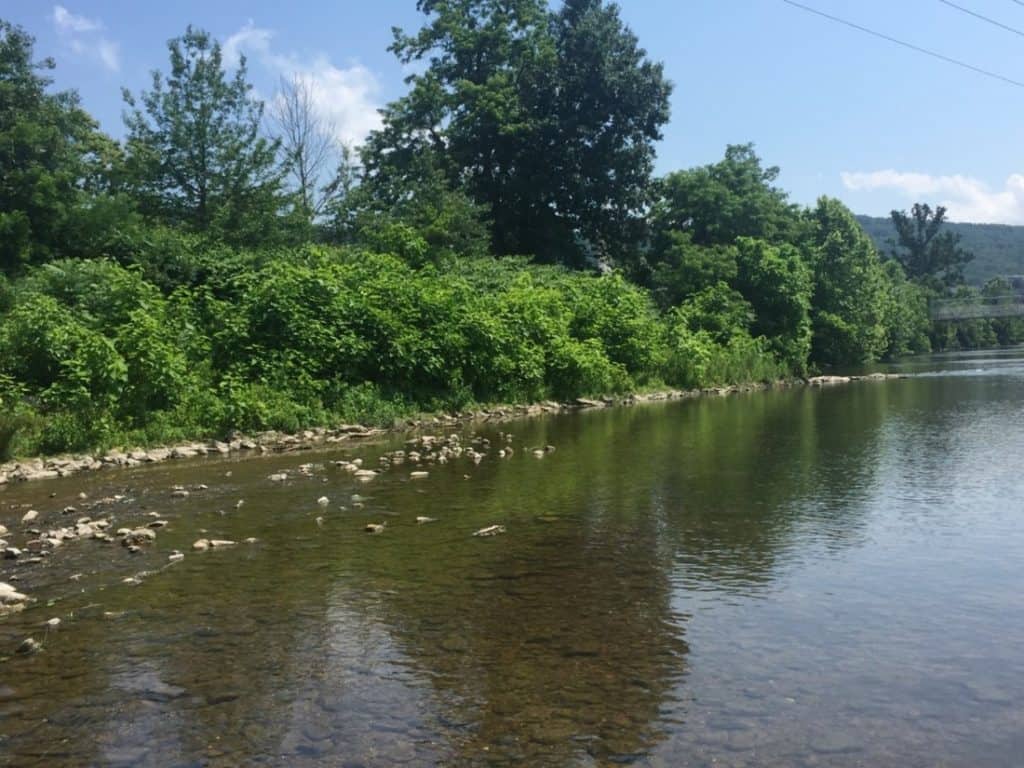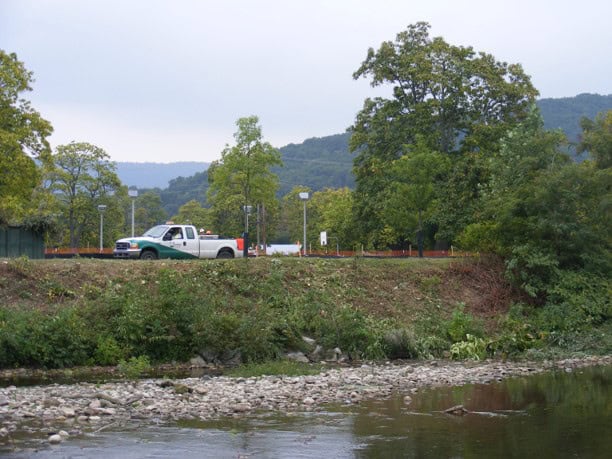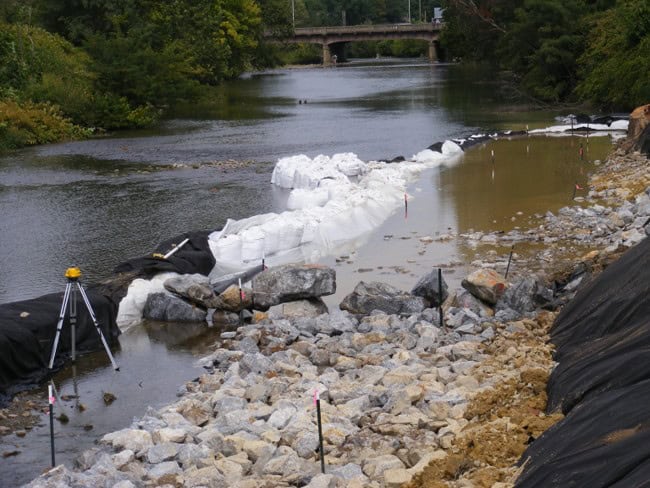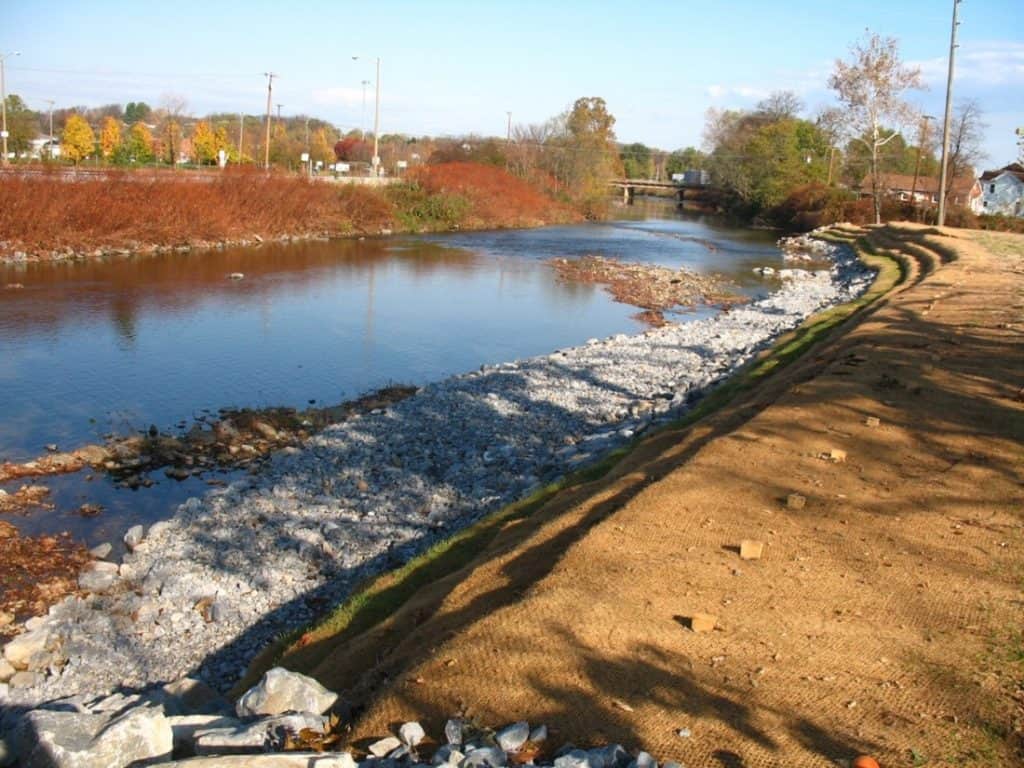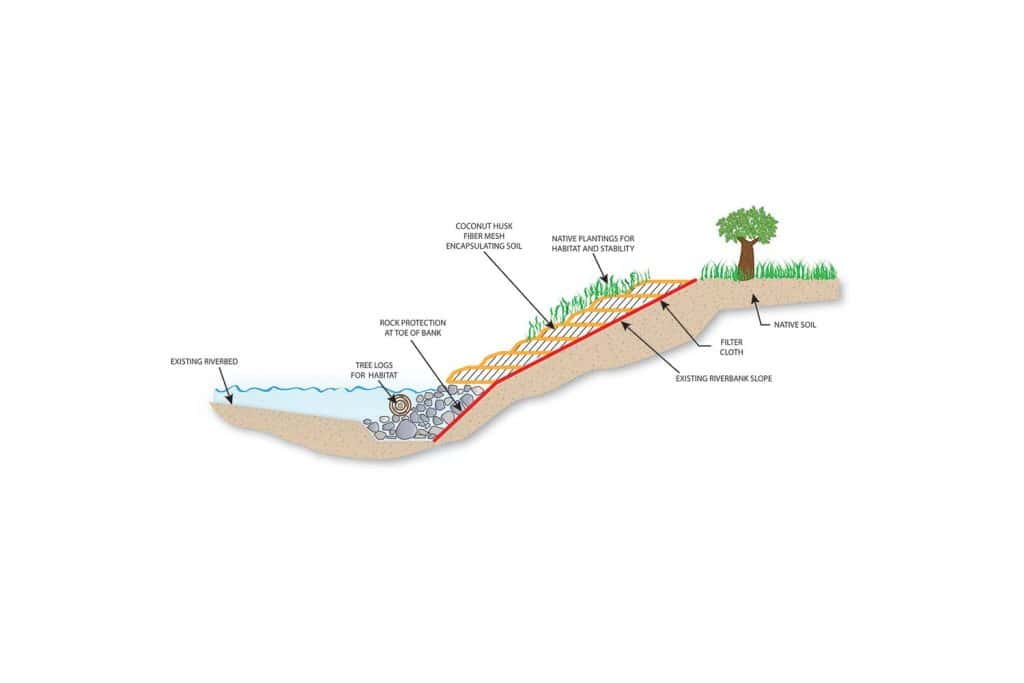DURATION: September 2009 – November 2009
STATUS: Completed
RIVERBANK LOCATION: Immediately downstream of the former DuPont Waynesboro plant on the east riverbank across from Constitution Park and upstream of Rockfish Run
RIVERBANK LENGTH: 500 feet
ESTIMATED MERCURY INPUT FROM ERODING BANKS: 7.3%
OUTCOME:
Since it was constructed, the Pilot Bank has withstood high river flows during large storms. The trees on the bank have matured and provide a buffer between the river and floodplain. On the slope of the bank, the coconut mesh fabric has degraded as designed, and the woody shrubs and grasses have taken root and provide strength and stability.

